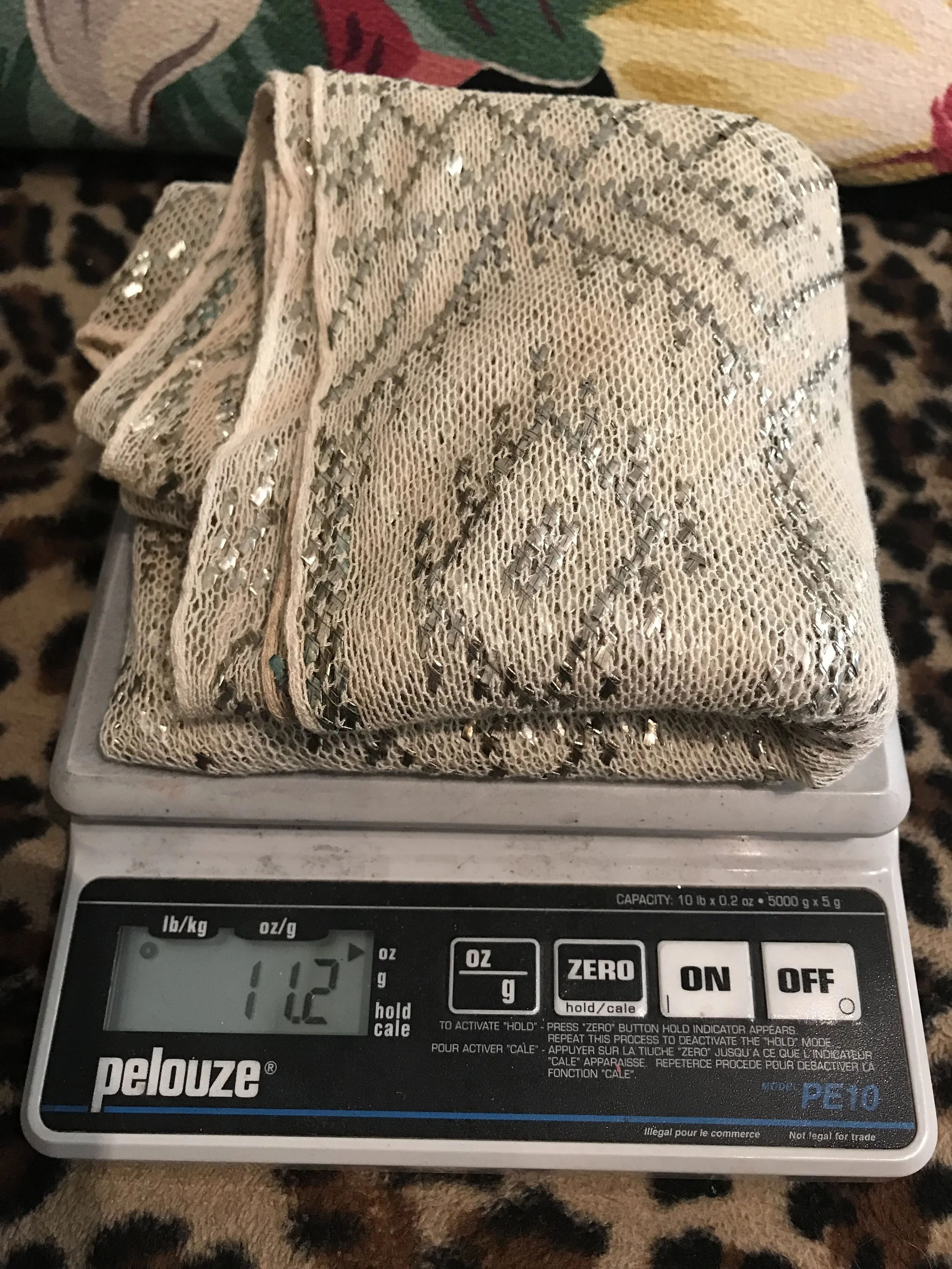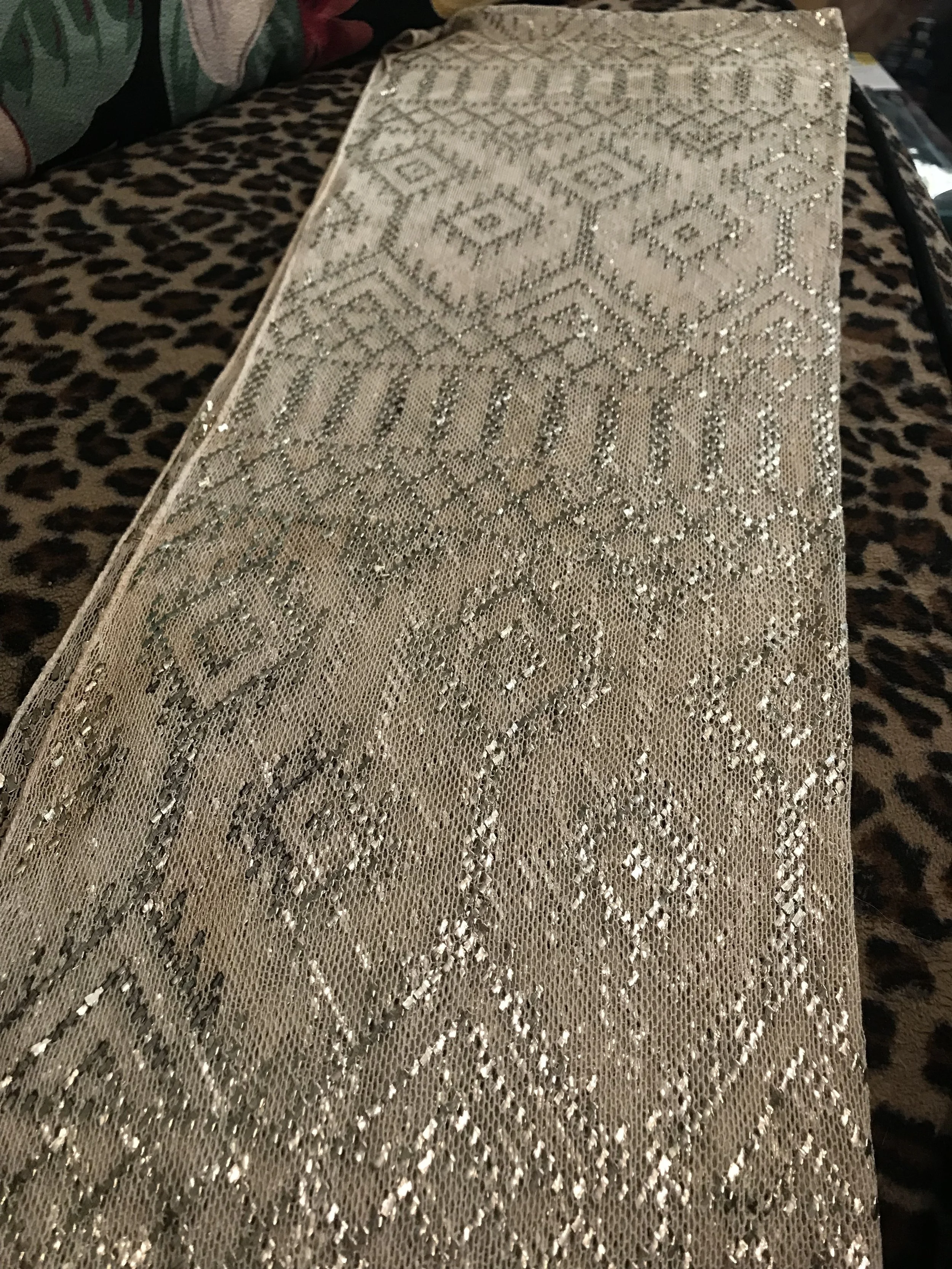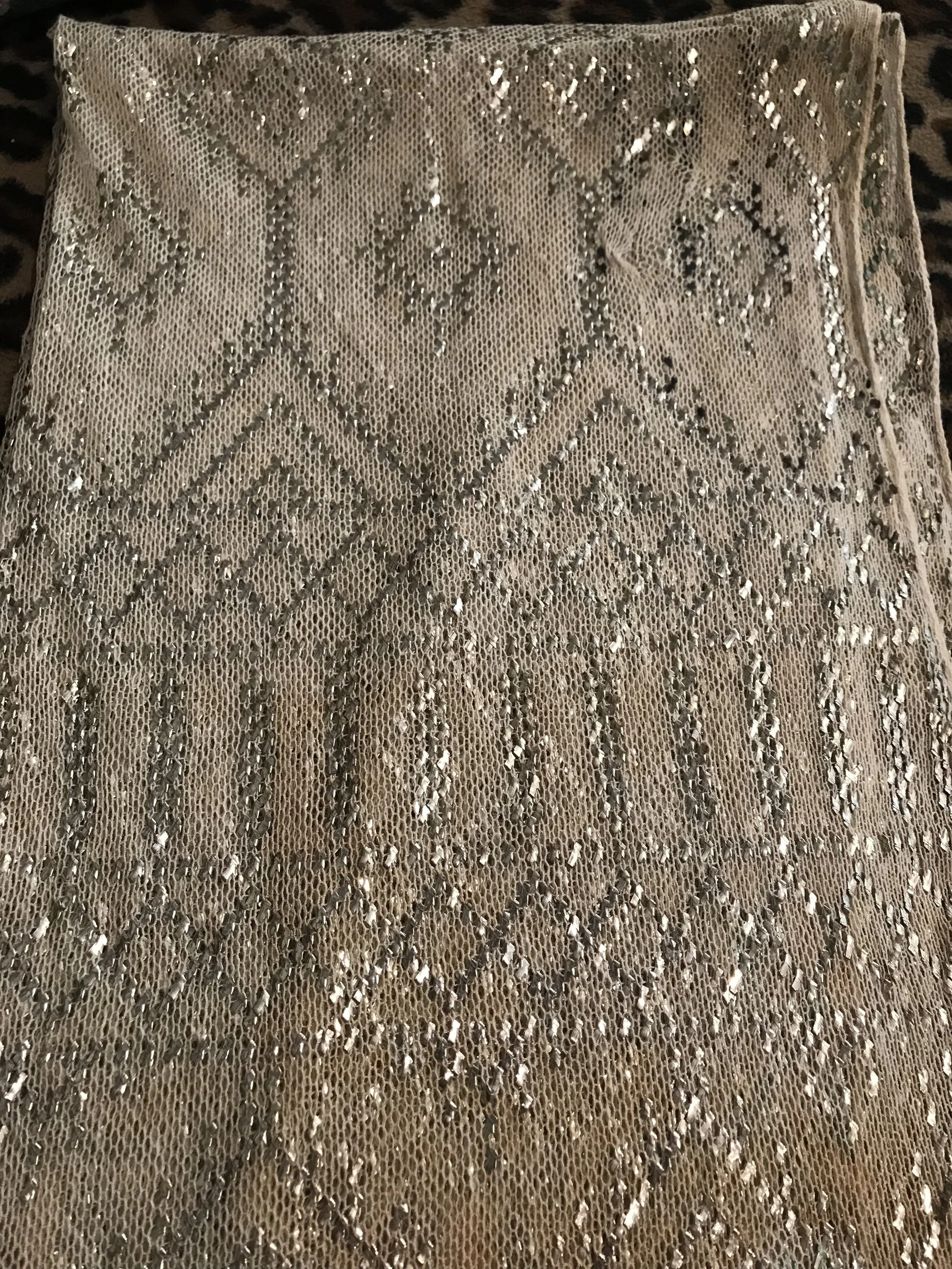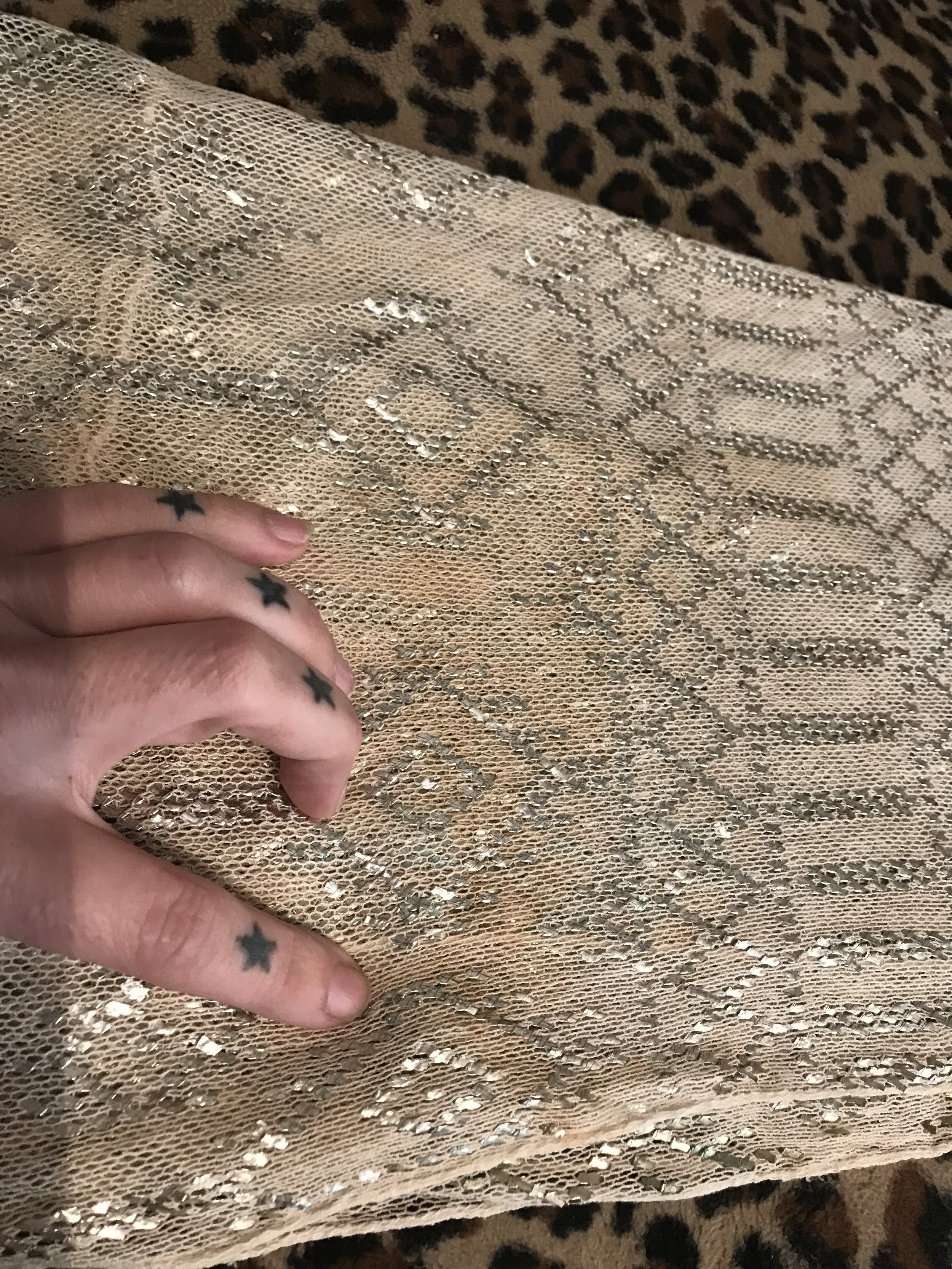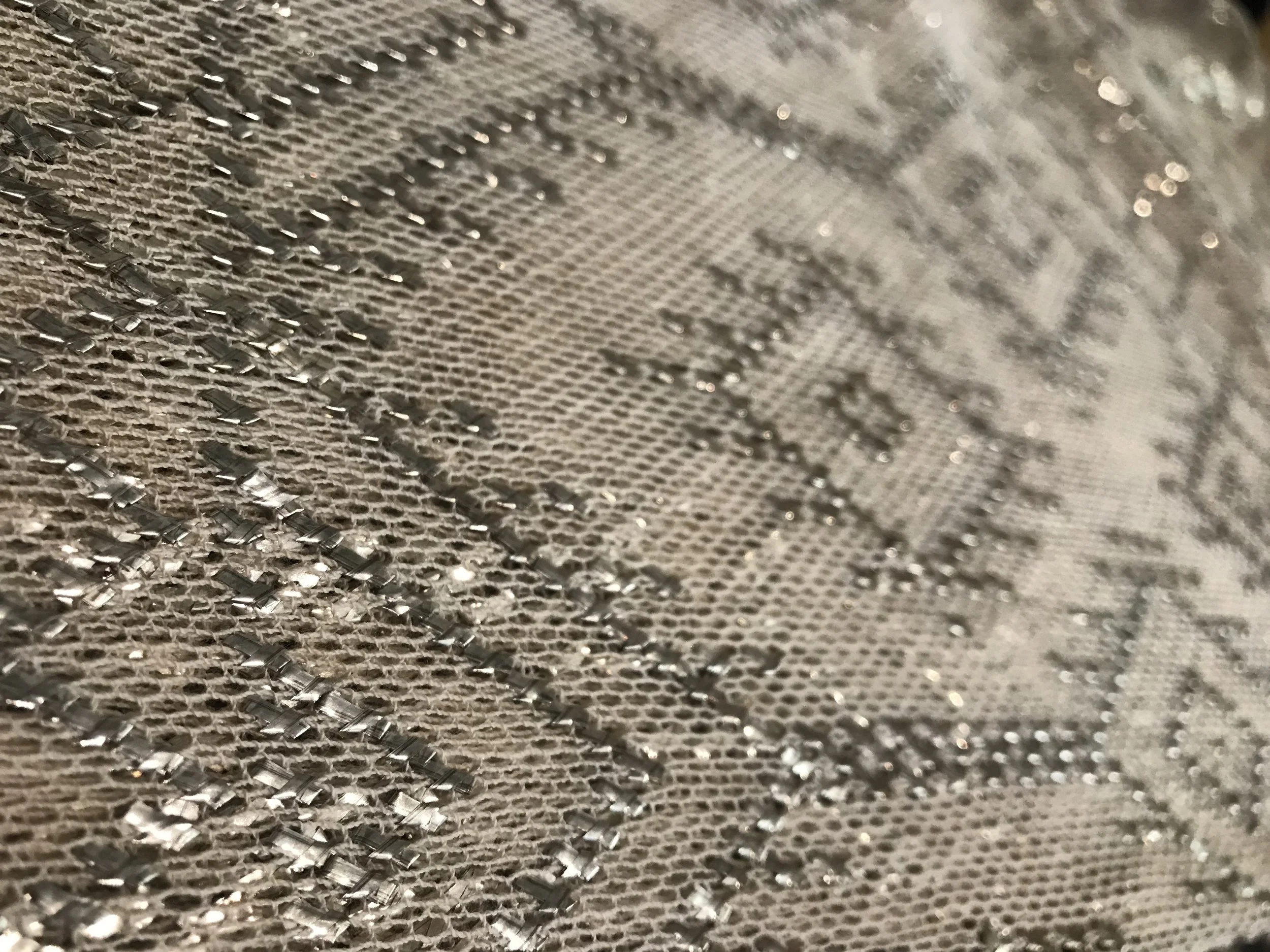Antique Assuit Shawl
Antique Assuit Shawl
Beautiful rare antique Assuit Shawl
Length-70
Width-20
Condition-No holes,slight yellowing and discoloring throughout from storage,a couple of the metal peices may be be sticking out.Overall amazing condition for age sold as is at a great price with free shipping.If you need additional photos or have questions feel free to ask before purchase.All sales are final.
Assuit’ is an Egyptian netting fabric embroidered with real metal and named after its city of origin, Asyut ~ a region of Upper Egypt at the heart of the textile industry during the 19th century.
This truly stunning, exotic and exceptional material is created by threading wide needles with flat strips of metal (such as nickel, silver, copper or brass) through cotton or linen netting, then flattening and rolling, or hammering, the metal to achieve the most exquisite and distinctive effect through impeccable craftsmanship and expertise. Patterns formed by this unique embroidery include geometric figures as well as plants, birds, people and camels ~ symbols heavily depicted in Egyptian iconography. It is generally black, white or ecru and used mostly as shawls, but is also seen in small squares, large pieces (used as bed canopies) and in traditional Egyptian dress. Vintage Assuit shawls are primarily made from the highly superior long-staple Egyptian cotton grown in the Asyut region with a quality so fine that antique dealers sometimes mistake the cloth for linen, or even silk.
The bobbinet machine (invented in 1807 and introduced to the Asyut region during the French Protectorate) led to machine-made netting and the subsequent production of Assuit here from the late 19th century.
Shawls began appearing in the last quarter of the 1800s and were first made as tourist art for European and American travellers, with the fabric later described in Edwardian era travel literature as ‘spangled mosquito netting’ (to be worn over hats as protection). Their popularity soared in the 1920s at the height of the rush to uncover the ruins of ancient Egypt ~ culminating in the discovery of Tutankhamun’s tomb in 1922 ~ incorporating the requisite motifs and symbols representative of hieroglyphics, Egyptian iconography and ancient art. Shawls then began to be made into garments, a fashion that neatly juxtaposed the geometric designs and motifs, influenced by the ancient world, with the modern Art Deco sensibilities of the time. Suddenly, everything Egyptian was desirable and its influence permeated dance, fashion and film.





